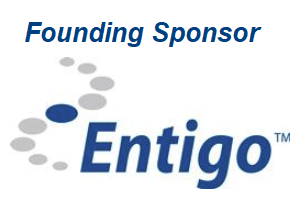HVAC & Appliance Warranty Report:
The appliance makers have higher warranty expense rates but the HVAC makers spend more. They also maintain warranty reserves that are much larger than the appliance companies, because the warranties on their products have longer durations.
Rather than being a branch of the major appliance industry, HVAC systems are in their own category. They spend more on warranties. Their warranties last much longer. Yet the percentage of revenue that these manufacturers spend on their warranties is much lower than it is for the appliance industry in general.
We began with a list of 39 manufacturers of heating, ventilation, and air conditioning systems, and 40 manufacturers of other household appliances. From the annual reports of each of these companies, we gathered four essential warranty metrics: claims paid, accruals made, warranty reserves held, and products sold. With the claims, accrual, and sales totals, we calculated an additional pair of percentages for the claims rate and the accrual rate.
The HVAC list also includes companies such as United Technologies Corp., Johnson Controls International plc, and Honeywell International Inc., which are more prominent in other industries such as automobiles and aerospace. Nevertheless, they also own huge HVAC companies such as Carrier and York International, so they also belong here. So does Ingersoll-Rand plc, the owners of Trane, and Lennox International Inc., one of the last independent "pure play" HVAC companies.
The appliance group is dominated by the likes of Whirlpool Corp., the king of major appliances for the home, and Middleby Corp., which supplies restaurants and other commercial food companies with kitchen appliances. It also included Welbilt Inc., the newly-renamed food service equipment spinoff of the Manitowoc Company.
The list of 40 appliance companies does not, however, include General Electric Company this time around. GE Appliances was bought by the Haier Group in early 2016, so GE is no longer in the appliance business. And fortunately for Haier, as a Chinese company they are not obligated to reveal their warranty expenses to the public. But even in the years before that divestment, GE said most of its warranty expenses arose from the sales of turbines, not appliances. And those warranty expenses are so huge ($827 million in claims paid last year) that including them here would eclipse the rest of the industry in a way that including Honeywell and United Technologies would not.
Warranty Claims
The 39 HVAC and 40 appliance manufacturers together spent $1.95 billion to settle claims last year, a $119 million decline from 2016. As can be seen in Figure 1 below, it was their smallest annual total since data collection for this industry began in 2003, and it was their second consecutive annual decline.
For the HVAC companies, their claims costs have also never been lower, at least not since 2003. Claims costs were down by $30 million last year, and that was the third consecutive annual decline. However, the appliance companies saw an even bigger decline of $89 million last year, after seeing smaller increases in both 2015 and 2016.
Figure 1
HVAC & Appliance Warranties
Claims Paid by U.S.-based Companies
(in US$ millions, 2003-2017)

Among individual companies, Emerson Electric Co. reported one of the largest drops in claims: $34 million or 20% of its 2016 total. It was the second year in a row the company's claims costs have fallen dramatically. United Technologies was close behind, with a $33 million drop that was 14% of its 2016 total, and its third consecutive annual decline.
Whirlpool reported a $28 million drop in claims last year, and Johnson Controls reported a $12 million decline. But their warranty claims cost levels remain in an elevated state.
Among the smaller warranty providers on the list, Helen of Troy Ltd. saw a $5.2 million decline in claims while A.O. Smith Corp. saw a $3.4 million drop. Ingersoll-Rand saw a $1.8 million drop, and food equipment company Standex International Corp. reported a $432,000 decline.
There were plenty of claims cost increases as well. One of the largest was reported by Honeywell, which saw its claims total rise from $215 million to $267 million last year. However, both Welbilt and John Bean Technologies Corp. saw claims cost increases that were proportionally larger. Further down the list, Lennox saw a 17% increase in claims; Regal-Beloit Corp. saw a 14% increase, and Middleby saw a 12% rise.
Warranty Accruals
Warranty accrual totals followed a pattern similar to claims, with HVAC accruals down for the third straight year and appliance accruals down for the second year in a row. Their combined total was down $83 million to $2.06 billion, and that was their lowest annual total of the past 15 years.
The HVAC companies cut their warranty accruals by $42 million while the appliance companies cut theirs by $41 million. Proportionally, it was a larger decline for the appliance makers than for the HVAC systems companies. And that brought HVAC accruals to their lowest level of the past 15 years, while for the appliance companies it was the lowest annual total since 2004.
Figure 2
HVAC & Appliance Warranties
Accruals Made by U.S.-based Companies
(in US$ millions, 2003-2017)

Among the companies on our lists setting aside $10 million or more in accruals last year, one of the biggest declined was the $111 million reduction reported by Honeywell. Recall only a few paragraphs ago that the company also reported one of the largest claims increases on the list, and you have an example of two massive and contradictory warranty events. Current costs are soaring so let's slash future funding totals.
There were several other accrual declines, but they tended to be much smaller. Regal-Beloit reduced accruals by $2.9 million. A.O. Smith reduced accruals by $3.5 million. Helen of Troy reduced accruals by $1.7 million.
Hikes in accruals were actually more numerous, but didn't have the same effect on the total. For instance, HVAC manufacturer AAON Inc. more than tripled its accruals from $3.6 million to $11.2 million last year. But that produced just a $7.6 million increase. Welbilt raised its accruals from $22 to $33 million, but that raised the industry total by only $11 million.
Much larger but much less numerous were the big increases: United Technologies raised accruals by $77 million, and Whirlpool raised accruals by $16 million.
Warranty Expense Rates
In order to produce the charts in Figures 3 and 4, we took the totals from Figures 1 and 2 and divided each by the corresponding product sales totals. In all cases, we tried to remove as much service, consumables, and investment revenue from each company's reports, so the calculation would express what percentage of warranted product sales was going towards paying warranty expenses.
Figure 3 shows that the HVAC companies have been spending roughly 0.7% of their product revenue on warranties for the past six years. The long-term average expense rate is actually closer to 0.85%, with a standard deviation of 0.11%. In the last quarter of 2017, the group's claims rate actually nudged below 0.66% for only the second time ever, setting a new low water mark for claims cost.
Their accrual rate, meanwhile, dipped below 0.73% for only the sixth time ever. While that accrual rate has dipped lower in the past, all those low water marks were in recent years (2012 to 2015). And within this group, there hasn't been an accrual rate measured above one percent in more than a decade.
Figure 3
HVAC Warranties
Average Claims & Accrual Rates
(as a % of product sales, 2003-2017)

Some of the biggest drops in claims rates were reported by A.O. Smith (its claims rate dropped from 1.5% to 1.3%) and Standex (its claims rate dropped from 1.3% to 1.1%). On the flip side, Honeywell dropped its accrual rate from 1.0% to 0.7%, and Regal-Beloit cut its accrual rate from 0.7% to 0.6%.
Increases weren't as common, but United Technologies raised its accrual rate from 0.6% to 0.8%, and Lennox raised its accrual rate from 1.0% to 1.1%. It seems like these companies are not prone to fast-changing or wide-ranging expense rates, which is both a product of good planning and long warranties.
Appliance Expenses
Perhaps because there are more retail sales to consumers, or perhaps because of a deficit of good planning and shortening warranties, the appliance category is neither as low-cost nor as stable as the HVAC side. In Figure 4, we can see expense rates that rose from below 0.6% to above 2.4% in a little over three years, though they have since leveled-off between 1.2% and 1.8%.
In fact, expense rates seem to have risen steadily from 2003 to 2010 before falling back and leveling off at their current rate for most of the past seven years. Over the long term, this group has averaged a 1.6% claims rate and a 1.5% accrual rate, with the standard deviation of the claims rate at 0.4% and at 0.3% for the accrual rate. And that just confirms what your eyes tell you: the claims rate has been a bit higher and a bit more volatile than the accrual rate.
Figure 4
Appliance Warranties
Average Claims & Accrual Rates
(as a % of product sales, 2003-2017)

Among individual appliance companies, expense rate increases have dominated during the past year. For instance, Welbilt saw its claims rate rise by 0.7%, while its accrual rate rose by 0.8%. Whirlpool's claims rate was up by 0.3% while its accrual rate was held unchanged at 2.1%. Middleby saw its claims rate rise by 0.2%, while its accrual rate rose by 0.3%.
If you compare the data in Figure 4 to the data in Figure 3, the first thing you'll find is that back in 2003 and 2004 the two groups had comparable warranty expense rates. However, since 2005 the HVAC companies have always reported lower warranty expense rates than the appliance companies. And over the past thirteen years, that gap has averaged almost 0.8% in size. Or to put it another way, appliance companies have spent almost twice as much on warranty per dollar of revenue as the HVAC companies have since 2005.
Warranty Reserves
Our final metric is the year-ending balance in the warranty reserve funds of these 79 HVAC and appliance manufacturers. As can be seen in Figure 5, the HVAC companies ended 2017 with just over $2.9 billion in their warranty reserves, while the appliance companies had just under $1 billion on hand. For both groups, reserves increased last year, though their balances have remained fairly stable for the past six years.
Figure 5
HVAC & Appliance Warranties
Reserves Held by U.S.-based Companies
(in US$ millions, 2003-2017)

Notice that with this metric, the HVAC companies dominate. While with either the claims or accrual charts in Figures 1 or 2, the totals for the HVAC companies were roughly one-and-a-half times as large as they were for the appliance companies, with reserves the HVAC companies are keeping roughly three times as much as the appliance companies do. That's a result of the longer warranties issued by the HVAC companies, who must therefore keep more funds on hand to pay claims for a longer period.
There's a way to measure this. For instance, at the end of 2017, Whirlpool had a warranty reserve balance that was equal to about 11 times what the company was paying per month in claims. Middleby had a ratio of 10 months. Helen of Troy was all the way down at 5.5 months.
In contrast, Lennox had a ratio of 46 between claims and reserves, meaning the company maintained a warranty reserve capable of paying claims for almost four years without additional accruals. A.O. Smith was also at 46 months. Johnson Controls, at 16 months, was at the low end of the HVAC scale.
Very Large Reserve Balances
United Technologies, which is in two warranty-intensive industries (aerospace and air conditioning), had more than $1.3 billion in its warranty reserve fund at the end of 2017. That was the eighth-highest balance reported by any U.S.-based manufacturer in any industry, and was actually higher than the balances of Whirlpool, Honeywell, and Johnson Controls combined.
In fact, at the end of 2017, the HVAC group members were holding the equivalent of 34 months' worth of claims in their reserve funds, while the appliance companies were closer to 13 months. Therefore, despite having claims and accrual rates almost twice as high as the HVAC companies, the appliance companies are apparently comfortable with a much thinner cushion between claims and reserve levels.
By writing one-year warranties and then keeping less than one year's worth of reserves, they're betting on nothing unexpected happening. And that's risky, as Whirlpool so publicly demonstrated when the trouble reported by some customers of its European acquisition Indesit caused recalls to spike and warranty expense rates to soar and its warranty reserve balances to drop a few years ago. That crisis is now behind it, but nothing's changed in terms of risk aversion.









